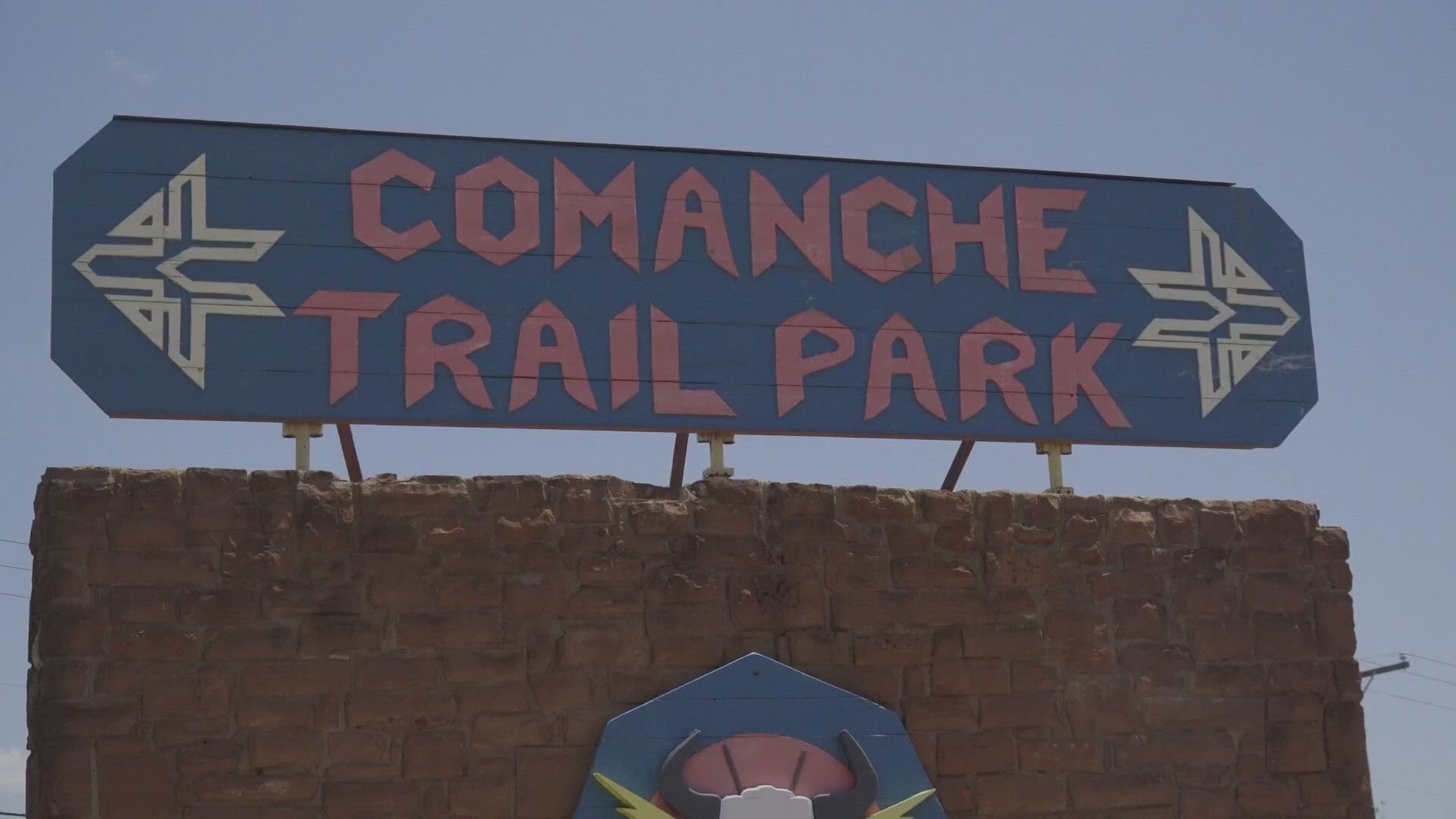BIG SPRING, Texas — It's home to the spring that gave Big Spring its name: Comanche Trail Park.
It has over 400 acres of land in Big Spring, but what's even more interesting is the history behind the park and how it all got started.
In fact, Big Spring wasn't always called Big Spring.
"Virtually every city on Interstate 20 west of Weatherford is here because of this site right here," Kelly Cook, Architect of Comanche Trail Park, said. "Midland and Odessa exist because of this site."
Comanche Trail Park has just about everything to offer: a 6,900-seat limestone amphitheater, an 18-hole golf course, tennis courts, baseball fields, playgrounds and pavilions.
But before all the modern-day features, the spring was a watering hole and a meeting place for the Native American Comanche tribe.
"The first settlers here at the spring came in about 1880 expecting the Tempe Railroad to be built," Tammy Schrecengost, Director of Heritage Museum, said. "It was being built from Fort Worth to El Paso and this was one of the stopping points because of the water."
"Prior to the highways, the rail came, they needed the spring for a source of water. It was the only source of water south of here," Cook said.
"As with anything, water is life and so in West Texas water is limited in certain areas," Terri Telchik, City of Big Spring Facilities Supervisor, said. "The Comanche Nation did use this area as one of their places because they could get water freely for their horses and themselves as well as they could go on top of the mountain and on a clear afternoon, you could see for 14 straight miles so they had the ability to be forewarned of anybody coming at any given time, it was almost like an oasis for them and they would come down here mostly during the winter time."
"It was known as their playground because they could come here and jump in the water and really have an enjoyable experience," Schrecengost said. "Plus, there were buffalo everywhere, and so the buffalo were their form of everything, you know, their clothing source, their homes, you know, they built teepees with them, so you know everything was used for their living purposes."
From its rich Native American history to its modern-day design, Comanche Trail Park truly isn't just unique to the city of Big Spring, but unique to all of West Texas.
"It is a large unique location that gives you a chance to do everything from walking to swimming to playing," Telchik said. "And it gives you a sense of the innate beauty that is West Texas… there is nothing like it in the whole wide world."

